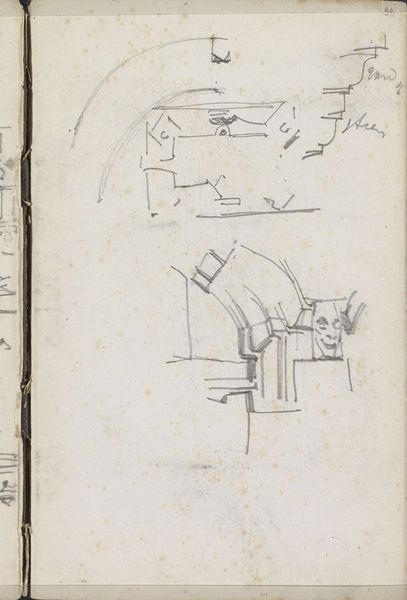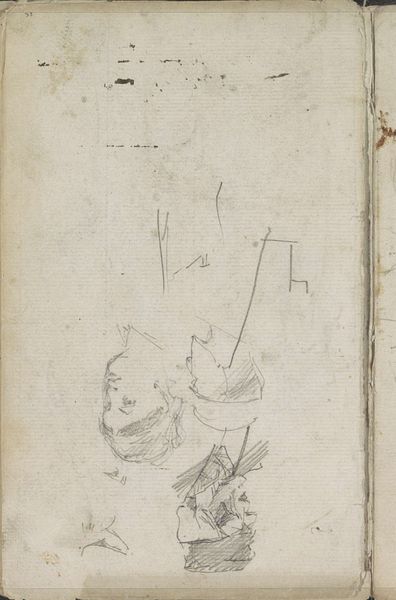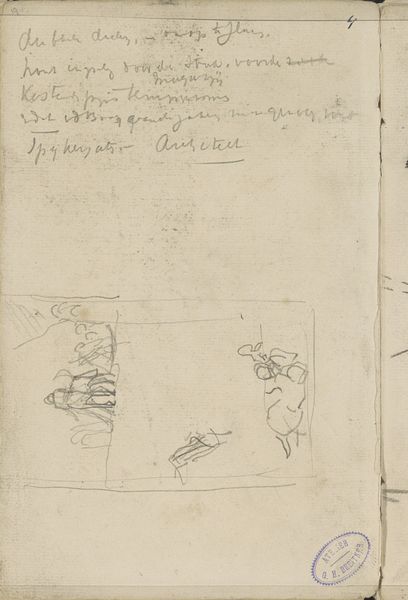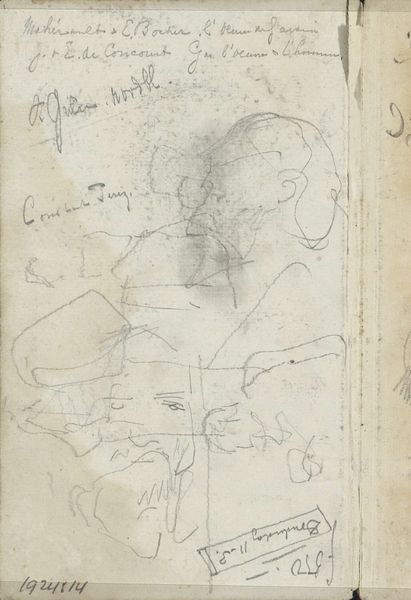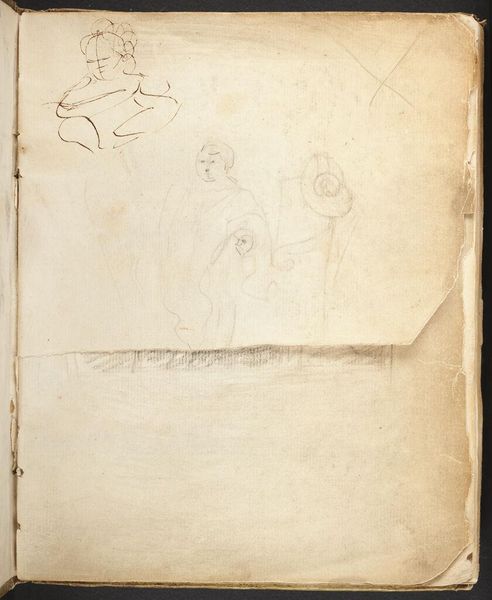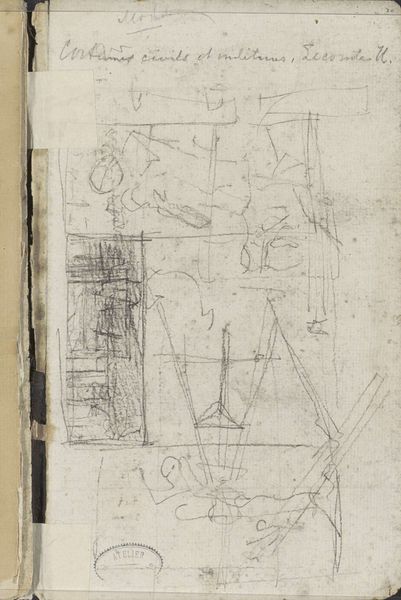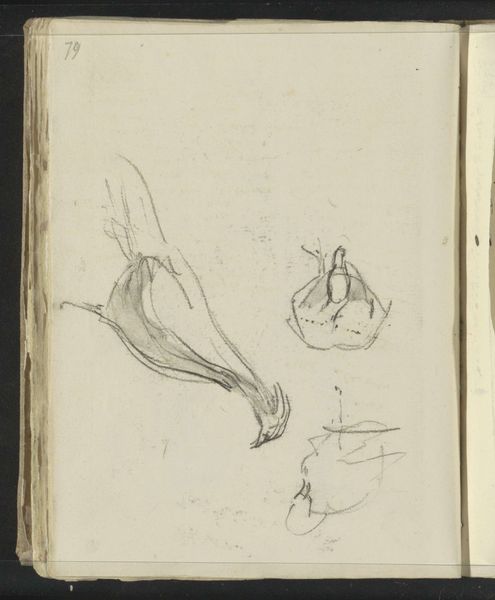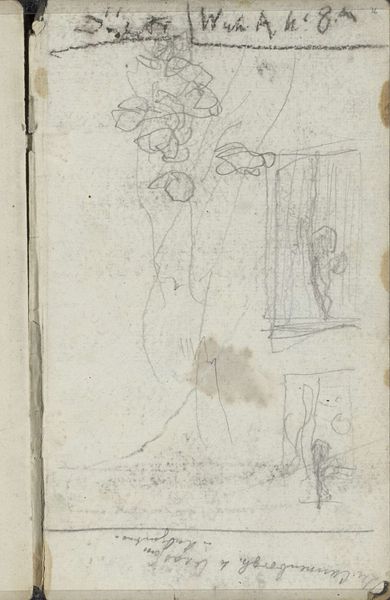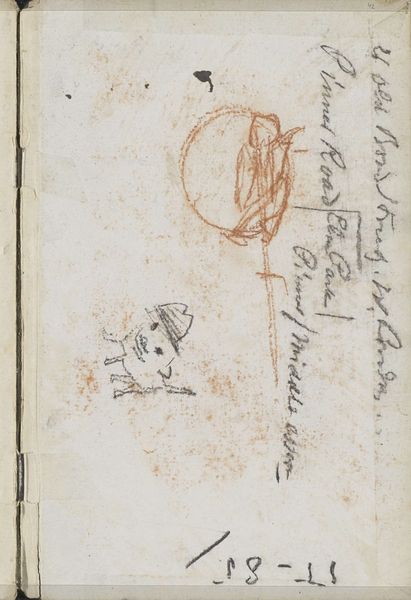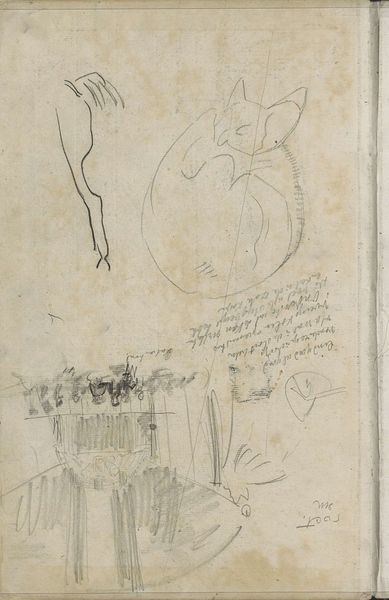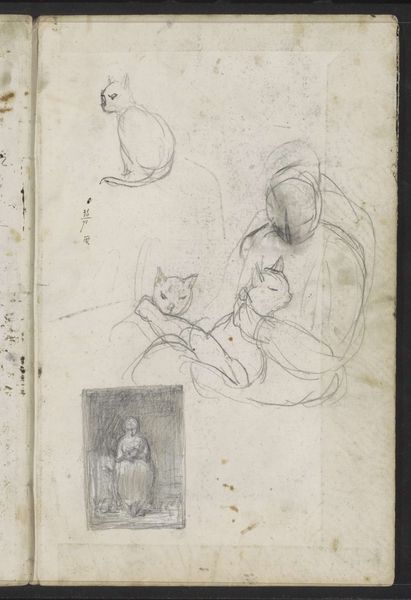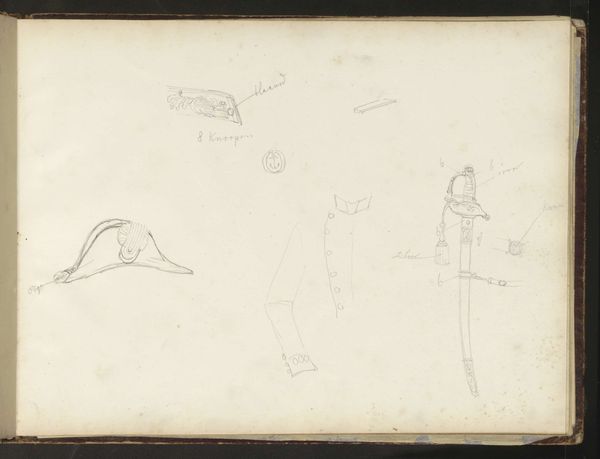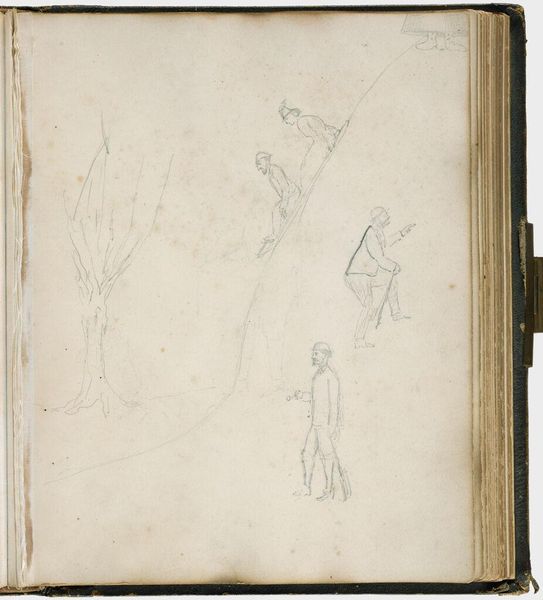
drawing, pencil
#
portrait
#
drawing
#
dog
#
pencil
#
genre-painting
#
realism
Copyright: Rijks Museum: Open Domain
Curator: This is "Liggende hond" (Lying Dog), a pencil drawing by Jozef Israëls, dating from around 1855 to 1859. Editor: He looks so forlorn, doesn't he? A sad, scruffy pup rendered in the softest graphite. It reminds me of the dogs you'd see waiting patiently outside butchers' shops, hoping for a scrap. Curator: Absolutely. Israëls was deeply engaged with depicting the lives of ordinary people, especially the working class and the poor. He uses the genre painting as a social commentary. Consider the role animals played in those communities, particularly dogs. They weren't just pets; they were often working animals, companions in hardship, and symbols of loyalty and resilience in a brutal world. Editor: That rough sketchiness adds to it, almost like he was trying to capture a fleeting moment of stillness. You can almost feel the dampness of the street, and that weariness deep in the dog’s bones. I feel like he understands it implicitly, you know? I bet he gave that dog a bone later! Curator: Israëls lived during a time of increasing industrialization and urbanization in the Netherlands, and, we see him turn to scenes of rural life. His work reflects the growing awareness of social issues and the lives of those often overlooked or ignored by the wealthier classes. I think he is also interested in portraiture by using this kind of composition and style in order to give the subject personality. Editor: He has got such kind eyes... Or maybe it is a projection? Because the style is almost childlike, and open, as though rendered from an authentic emotional reaction to an encounter. A meeting on a rainy day... I think it is interesting he puts it in a notebook too with what looks like notes. He cares a lot about the details. Curator: Placing it within the pages of what appears to be a sketchbook really heightens the intimacy of the encounter. It grounds the scene in observation. And it reminds the viewer that the poor have inner lives as much as their supposed betters. Editor: Looking at this drawing has given me such food for thought. Sometimes I get jaded, but the tenderness and empathy in works like these snaps you right out of it, don’t you think? Curator: Yes. It's a quiet but potent reminder that even the smallest subjects can hold profound emotional and social weight, seen through an intersectional perspective of humanity and realism.
Comments
No comments
Be the first to comment and join the conversation on the ultimate creative platform.
